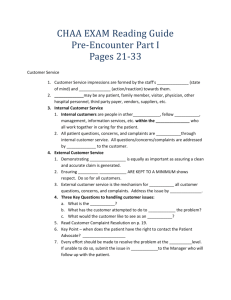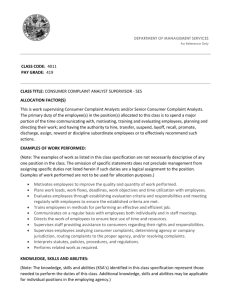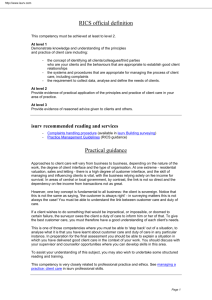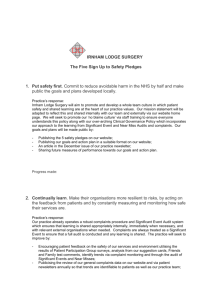File - Brandy Schnacker MSN Portfolio
advertisement
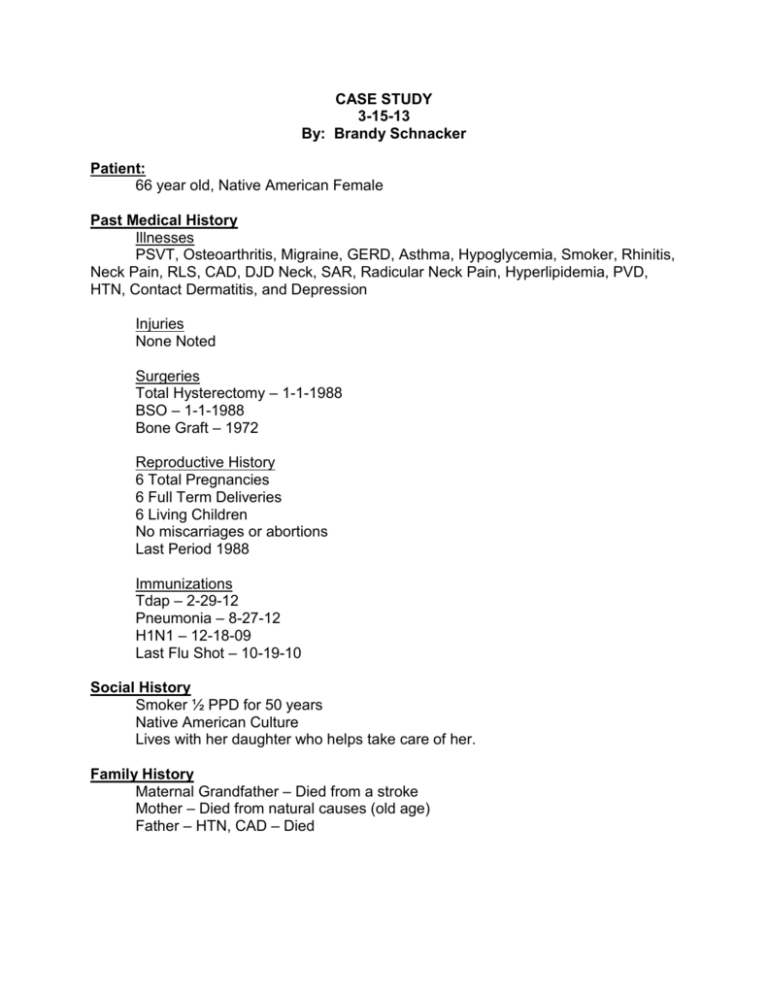
CASE STUDY 3-15-13 By: Brandy Schnacker Patient: 66 year old, Native American Female Past Medical History Illnesses PSVT, Osteoarthritis, Migraine, GERD, Asthma, Hypoglycemia, Smoker, Rhinitis, Neck Pain, RLS, CAD, DJD Neck, SAR, Radicular Neck Pain, Hyperlipidemia, PVD, HTN, Contact Dermatitis, and Depression Injuries None Noted Surgeries Total Hysterectomy – 1-1-1988 BSO – 1-1-1988 Bone Graft – 1972 Reproductive History 6 Total Pregnancies 6 Full Term Deliveries 6 Living Children No miscarriages or abortions Last Period 1988 Immunizations Tdap – 2-29-12 Pneumonia – 8-27-12 H1N1 – 12-18-09 Last Flu Shot – 10-19-10 Social History Smoker ½ PPD for 50 years Native American Culture Lives with her daughter who helps take care of her. Family History Maternal Grandfather – Died from a stroke Mother – Died from natural causes (old age) Father – HTN, CAD – Died Chief Complaint Temps of 101 for the last four days, nausea, SOB, sore throat, productive cough, chills, body aches, has not been able to eat anything, only is drinking water. History of Presenting Illness 4 days of fevers as high as 101 Cough with brown, thick sputum Can not lay flat to sleep, has to sleep up on pillows or in the recliner Using Nebulizer every 2 hours over the last four days Increased oxygen at night to 3L Nausea Body Aches Sore Throat Still smokes cigarettes Exposed to strep throat Did not receive immunization for flu this season Review of Symptoms HEENT – Sore throat – hurts to swallow. No headaches, ear pain or drainage. Some clear drainage from nose, no sinus pain. Eyes – No complaints. Psychiatric – Does feel fatigued, sleep pattern has been difficult with her breathing. Can only sleep about 2-3 hours at a time. Neurological – No complaints Musculoskeletal – Body aches, no pain, swelling, ROM Cardiovascular – No complaints of chest pain, numbness, tingling, lightheadedness, or dizziness. Respiratory – Complaints of SOB, cough with brown, thick sputum. Dyspnea with exertion and rest. Hard to catch her breath. Have noticed wheezes when she breaths. Cannot lay flat to sleep. Had to increase use of oxygen to 3L at night time. Skin – Intact with a slow turgor response. GI – Nausea when eating foods. Only been drinking water because food makes her nauseated. No vomiting, cramping, bloating or diarrhea. GU – No complaints Reproductive – No complaints Endocrine – No complaints Breasts – No complaints Peripheral Vascular – No complaints Hematologic – No complaints Constitutional – Very ill appearing, moderate distress when breathing, no appetite. Physical Findings Constitutional - 135lb, 103.2 temperature, respirations – 24, pulse – 92, blood pressure – 118/68, no complaints of pain, 90% on room air. Cardiac – S1, S2 regular, No murmurs, rubs or clicks Respiratory – Dyspnea upon exertion and rest. Lungs decreased bilaterally throughout all lobes with slight expiratory wheezing in lower lobes. Skin – poor turgor elasticity, eyes sunken within her face. HEENT – PERRLA, TM gray and pearly, Nose and nasal mucosa with erythema, no swelling, Pharynx with erythema, no swelling or exudates. No sinus tenderness or lymph edema. GI – Nontender, BSX4, active Psychiatric – A/O X 4, in moderate distress. X-ray of the chest, CBC and Comprehensive Chemistry could have been done at this facility but it would have taken quite some time for the results to come back so held off on doing these tests for the hospital to order. Differential Diagnoses Fever Unspecified – Primary Diagnosis – She had been having fevers for four days and there were not x-rays done or lab work at the time so we could not diagnosis her with pneumonia or other diagnosis. Dehydration – Secondary Diagnosis – Skin turgor elasticity was slow and eyes were sunken in. Bronchitis – This could have been her main diagnosis but needed to run a CBC to see about infection but was going to have her go to the hospital to have her lab work done there. Pneumonia – Could not be ruled out but needed to have a chest x-ray done and was going to have the hospital do that after admission. Influenza A/B – Could not be ruled out at this time because needed to do a swab. Also patient had not had her flu shot for this season. Exacerbation COPD – With her long history of smoking this could be a diagnosis but you usually do not see an exacerbation with a run of fevers. Plan of Care 99213 Admit to Stormont Vail Hospital Hospitalist to Admit Patient Patient’s daughter was with her through the whole appointment. Both the patient and her daughter were kept abreast of what was going on throughout the appointment. Discussed with the daughter if she was willing to take her mom to the hospital or if they would like to go by ambulance. Discussed with the patient if she was willing to go to the hospital to get rehydrated and also find the cause for her fevers. Pt and daughter were both in agreement with plan of action. Also explained the process of admission to Stormont Vail to patient and daughter. Patient and family both in agreement to hospitalization and how to transport patient to hospital via private car. Reflection on Care Provided I believe that throughout this appointment I was able to see the distress the patient was in and came up with a quick plan of care to help her get the best relief possible. I was able to give report to the hospitalist so that he understood why the patient needed hospitalization. I believe that I handled myself in a professional manner when talking to the accepting hospitalist and was able to give him the appropriate information that he needed to assess the situation. I believe the next time that I have a patient to be admitted that I am better skilled at knowing what type of information they are looking for and any procedures we have done for the patient. We did not do any lab work or x-rays because they were going to do that at the hospital and it would have taken our facility longer to produce the reports and I did not want her sitting in the office being uncomfortable while we waited for results. It was more important to get her on the road to the hospital so that she could start her care immediately and also to feel better. I believe that I would like to have been a little faster on writing my note so I could have gotten her gone a little faster, but I wanted to make sure that there were no important information left out for the receiving facility and physician. Evidence does show that fever is the first sign of sepsis and systemic inflammatory response syndrome which can be fatal at times. The recommendations for fever for possible pulmonary infections include a chest imaging study, respiratory secretions to test for microbiology, lab work consisting of blood cultures, and CBC (Kramer, 2010). Having this patient get to the hospital for the appropriate care will assist her in the appropriate treatment for her illness. REFERENCES Kramer, R. M. (2010). Evidence-Based Practice Fever Evaluation and Early Recognition of Systemic Inflammatory Response Syndrome in Critical Care Patients. Dimensions of Critical Care Nursing, Vol. 29, No. 1, 20-28.


